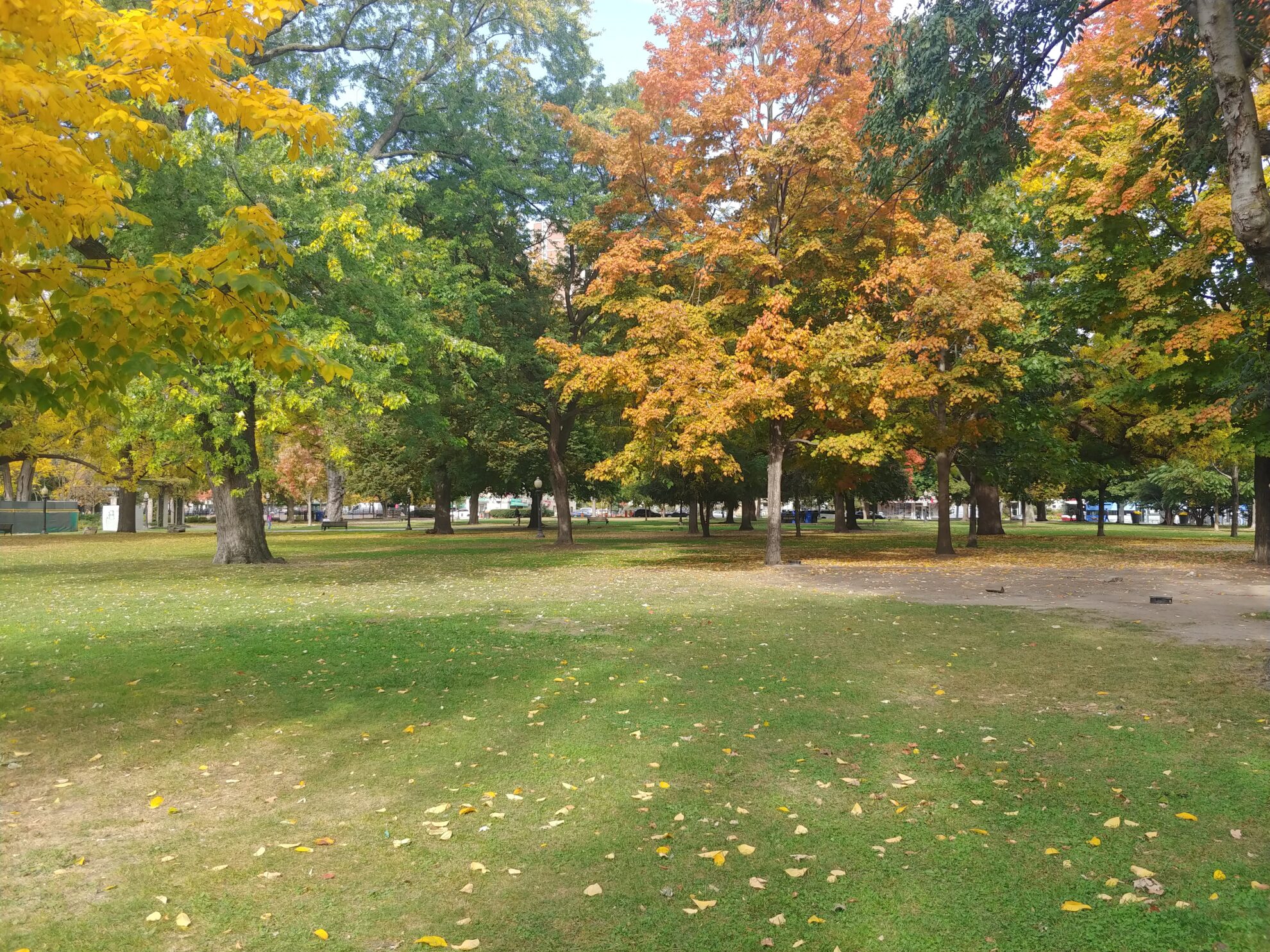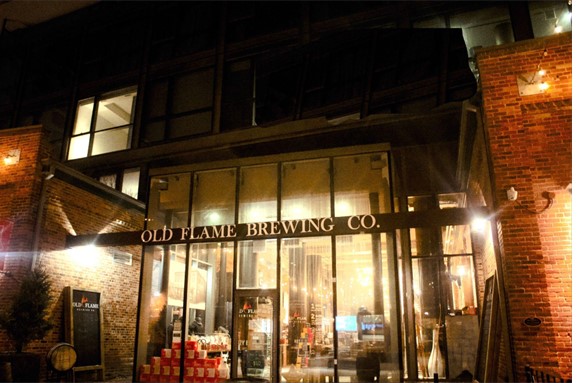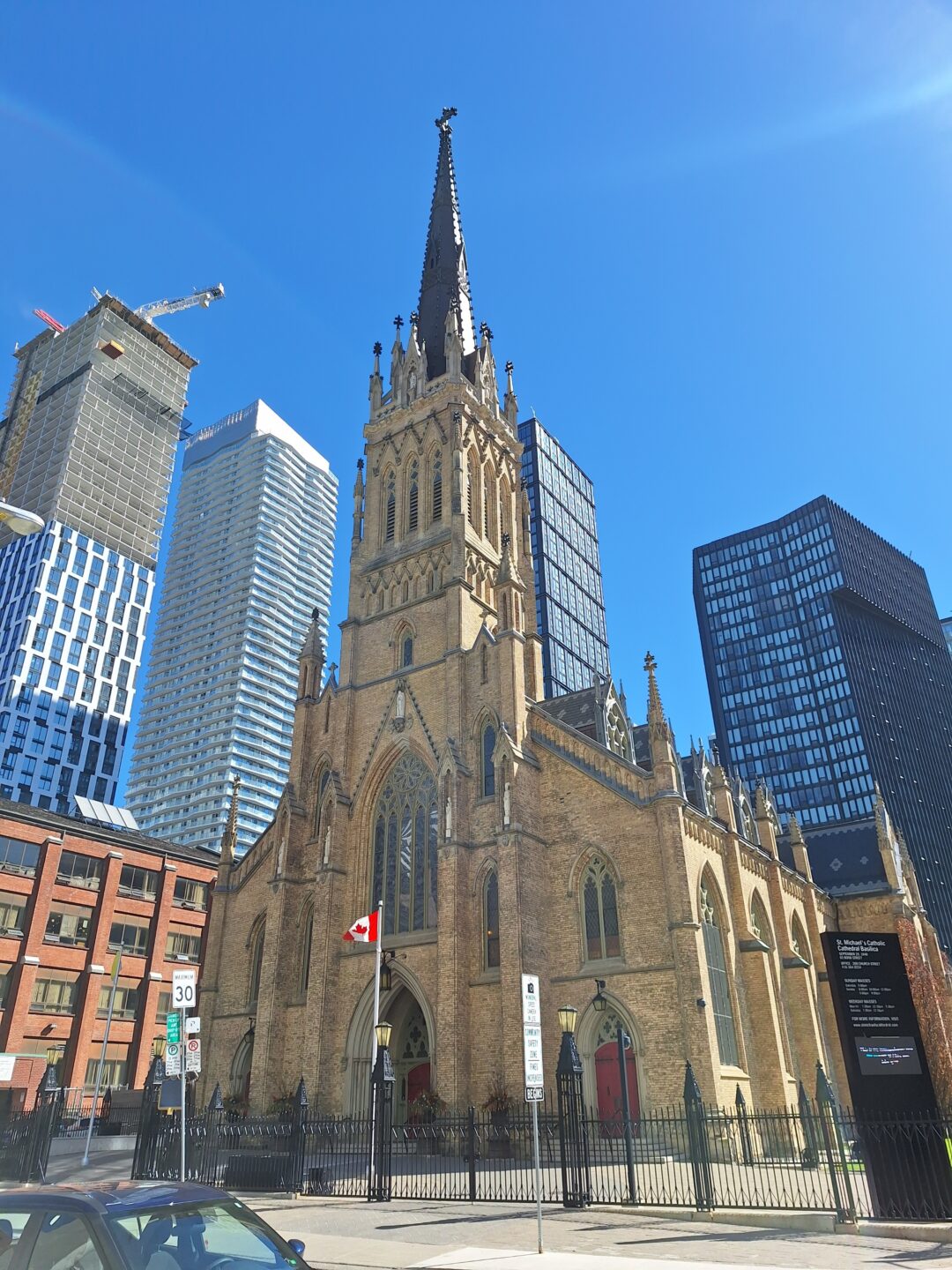Andre Bermon –
For the first time in nearly two years, Allan Gardens is encampment free. All that remains on the east side of the park is green grass, trees and the odd patch of dirt. It’s quite the turnaround for the urban greenspace that in the spring/summer of 2023 hosted more than 90 tents. At the time it was Toronto’s biggest encampment.
(To say Allan Gardens is encampment free comes with a caveat: tents associated with the two Indigenous teepee structures remain – however, unlike the previous residents, they have permission from the city to be there.)
Much credit goes to Ward 13 Councillor Chris Moise for accomplishing this feat. Since coming to office in November 2022, Moise and his staff made it a priority to clear the park and house as many people along the way as they could.
According to the councillor’s October 18 press release, since early 2023 city’s outreach staff managed to permanently house 98 people living in Allan Gardens, and helped a further 433 connect with indoor shelter – a significant undertaking given the lack of space.
But is the city’s slow and grinding process to house people and clear public parks effective in the long term?
The city’s approach to removing encampments doesn’t come cheap. For example, in the last half 2023, council spent $1.7 million, of which $1.1 million was staff operational costs, in supporting Allan Gardens encampment residents. This included social services, corporate security and the fire department. The rest of the money went to maintain the Info and Help Centre, a mobile trailer the city placed in the park to service residents.
Within that same six months about 56 people were moved into permanent housing, according to the city’s encampment dashboard. That means about $30,000 per person was spent to support and transition them into housing.
To the city the financial cost was justifiable because the alternative, forced removal, became unviable. Two key outcomes dealing with encampment evictions in early 2023 are responsible for this change in approach: a City Ombudsman report and a court order in Waterloo.
The Ombudsman’s findings about the 2021 police crackdown on encampment sites was politically charged. Its non-binding recommendations effectively reprimanded council’s decision to violently displace homeless people. It also served as a policy roadmap for a new encampment strategy adopted the following year.
The Waterloo ruling by an Ontario Superior Court judge added a legal precedent. In essence, the verdict stated that municipalities could not evict homeless people from public spaces unless they had somewhere to go, such as shelter beds. Otherwise, eviction could be deemed to violate Charter Rights, and therefore, leave municipalities vulnerable to litigation.
Toronto’s approval of a “human rights-based” encampment strategy last June reflected intentions to build rapport with encampment residents and avoid violent public confrontations. An additional $3.4 million was allocated to local housing efforts in Allan Gardens and Clarence Square Park in Ward 10. Because of budget constraints, the policy allows the city to choose no more than three encampment sites per year and give staff extra resources to house people living in tents.
Now that Allan Gardens is deemed encampment free, the remaining 2024 funds are said to be earmarked for St. James Park, which has seen an influx of tents in the past few months.
Adopting the new encampment policy is certainly laudable, but its long-term success depends on having places for homeless people to go. As of May 5, the city was accommodating 12,221 people in the shelter system, with more than half being refugee claimants. In 2023 the city tracked a daily average of 202 callers per day unable to use shelters, nearly double the 2022 number. This year is likely similar, which means hundreds of people lack a shelter bed each night.
Assuming the encampment budget is renewed in 2025, City Council’s park-hopping strategy will sink millions more dollars to house a few dozen people, while the rest get shuffled back into an overcrowded shelter system. Many will inevitably head back to parks, and encampment roundups will continue.
And since homelessness numbers nearly double exits to housing, according to the city, the backlog will tremendously strain future budgets. That may leave the encampment strategy under-resourced or defunded entirely.
Before the bridge went to print, Premier Doug Ford dangled the possibility of using the constitution’s notwithstanding clause to overturn Charter Rights of people living in public spaces. Twelve Ontario mayors – not including Toronto’s Olivia Chow – signed a letter pleading for the override power.
If the province uses the notwithstanding clause and forces encampment evictions once again onto the table – how will City Council react? Will it go back to the old ways or cling to an unsustainable encampment strategy to avoid a public backlash? Meanwhile, will voters put up with encampments for years to come?
Whatever council decides, the homeless will lose.





4 Comments
It would be of interest to know just what comprises the agreement the city has with the Indigenous Sacred Fire compound now 3 tee tha handful of tents, an enhanced perimeter and much storage items and a sound system that plays drumming sometimes but mostly music. Also, as of the departure of the last park tents, the addition of another Indigenous tent outside the compound
Agree with Doug. Didn’t know the city sanctioned the noise, dirt, garbage, pollution and environmental impact on the park. The noise in the middle of the night, every night is annoying and no one will do anything about it. Natalie, who seems to be their leader, has collected $20,000. through a GoFundMe page. So setting up tents proves there’s profit in encampments.
i will not debate the merits of the ISF ‘ teepees ‘ except to mention that the
smoke from the wood burning is both unpleasant and a health hazard. we all
know now that smoke from wood burning ( remember the major forest fires )
is unhealthy. but it is worse when the wood burns at a low heat.
https://www.epa.gov/burnwise/wood-smoke-and-your-health
note that some of the gases given off ( not filtered by hepa filters ) are the
same as those found in second hand smoke – if you can smell it, you are
exposed .
also there is new research that air pollution from forest fires is much
worse/deadlier than other ( common industrial ) air pollution :
https://www.medscape.com/viewarticle/wildfire-smoke-more-toxic-than-general-air-pollution-2024a1000i6u
so is this sacred fire really green, healthy, or a good use of resources ?
thanks for reading
I have lived in the area for eight years, and I can’t wait to move. It’s a complete and utter dump, highlighting the sheer incompetence of Chow and Moise—and, really, of all levels of government in this country. Canadians deserve better. I can’t leave my apartment without encountering a homeless person screaming in my face. There is human $hit everywhere, and all of the third spaces in my neighborhood are littered with people living in tents, often strung out on drugs. All we can do it bite down on our gum shield and then get out and vote these morons out of office when it’s time.